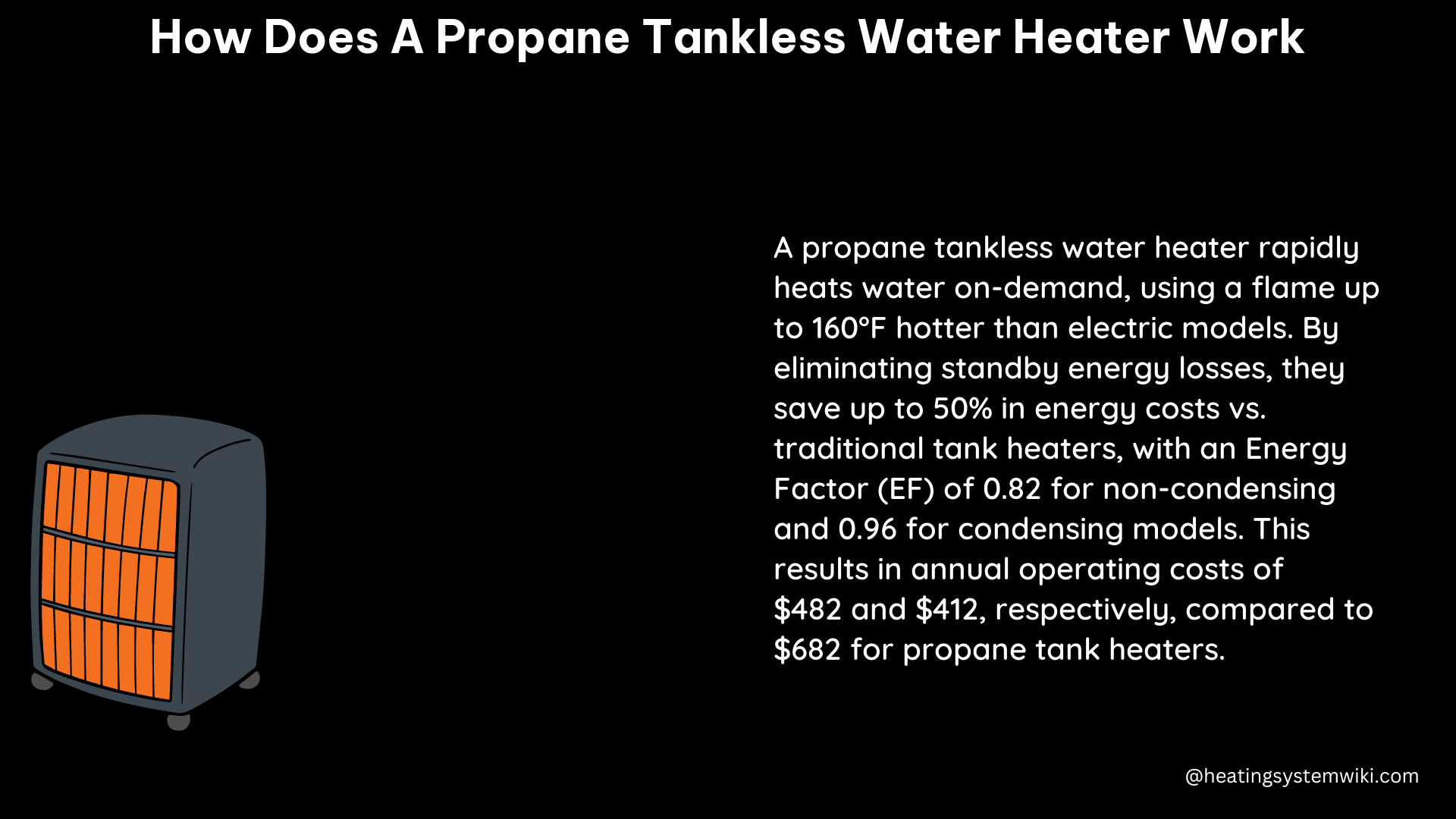A propane tankless water heater is a highly efficient and on-demand heating system that provides hot water without the need for a storage tank. Unlike traditional water heaters, these units heat water instantly when a hot water tap is turned on, eliminating the energy losses associated with continuously heating and storing water. This comprehensive guide will delve into the inner workings of a propane tankless water heater, its technical specifications, and the step-by-step process of installing one in your home.
The Mechanics of a Propane Tankless Water Heater
At the heart of a propane tankless water heater is a powerful gas burner that is activated by a flow sensor. When a hot water tap is turned on, cold water is drawn into the water heater, triggering the flow sensor. This, in turn, ignites the gas burner, which heats a heat exchanger. The incoming cold water then circulates around the heat exchanger, absorbing the thermal energy and leaving the heater at the desired set-point temperature.
The combustion gases generated by the gas burner are safely vented out of the home through a dedicated, sealed vent system, ensuring that no harmful emissions are released into the living space. This on-demand heating process is highly efficient, as it eliminates the energy losses that occur in traditional storage-tank water heaters during standby operation.
Technical Specifications of Propane Tankless Water Heaters

Propane tankless water heaters are designed to be highly energy-efficient, with ENERGY STAR certified models featuring a secondary heat exchanger. This secondary heat exchanger extracts additional heat from the combustion gases, cooling them to the point where condensation occurs. This condensation is then drained through a dedicated PVC pipe, further improving the overall efficiency of the system.
The energy efficiency of propane tankless water heaters can be up to 40% higher than traditional storage-tank water heaters, with some models boasting a flow rate of up to 222 gallons per hour. This is more than three times the delivery rate of a standard 50-gallon electric storage-tank water heater, making them an excellent choice for homes with high hot water demands.
Installing a Propane Tankless Water Heater: A DIY Guide
Installing a propane tankless water heater requires careful consideration of several key factors to ensure a safe and efficient operation. Here’s a step-by-step guide to help you through the process:
1. Choose the Right Location
Tankless water heaters should be installed as close as possible to the point of use to minimize heat loss and improve hot water delivery time. This can be particularly important in larger homes or homes with multiple bathrooms.
2. Install the Gas Line
Ensure that the gas line is the correct size and meets local codes and regulations. This task should be performed by a licensed professional if you are not experienced with gas line installation.
3. Install the Venting System
Tankless water heaters require a dedicated, sealed vent system for the combustion gases to safely exit the home. This should be done according to the manufacturer’s instructions and local building codes.
4. Install the Water Lines
Connect the cold water supply line and the hot water output line to the tankless water heater. Ensure that the connections are secure and meet local plumbing codes.
5. Test the System
Once the installation is complete, thoroughly test the system to ensure that it is functioning correctly and safely. This includes checking for gas leaks, proper venting, and water tightness.
Conclusion
A propane tankless water heater is a highly efficient and on-demand heating system that provides hot water without the need for a storage tank. By understanding the mechanics, technical specifications, and installation process of these units, you can make an informed decision about whether a propane tankless water heater is the right choice for your home.
